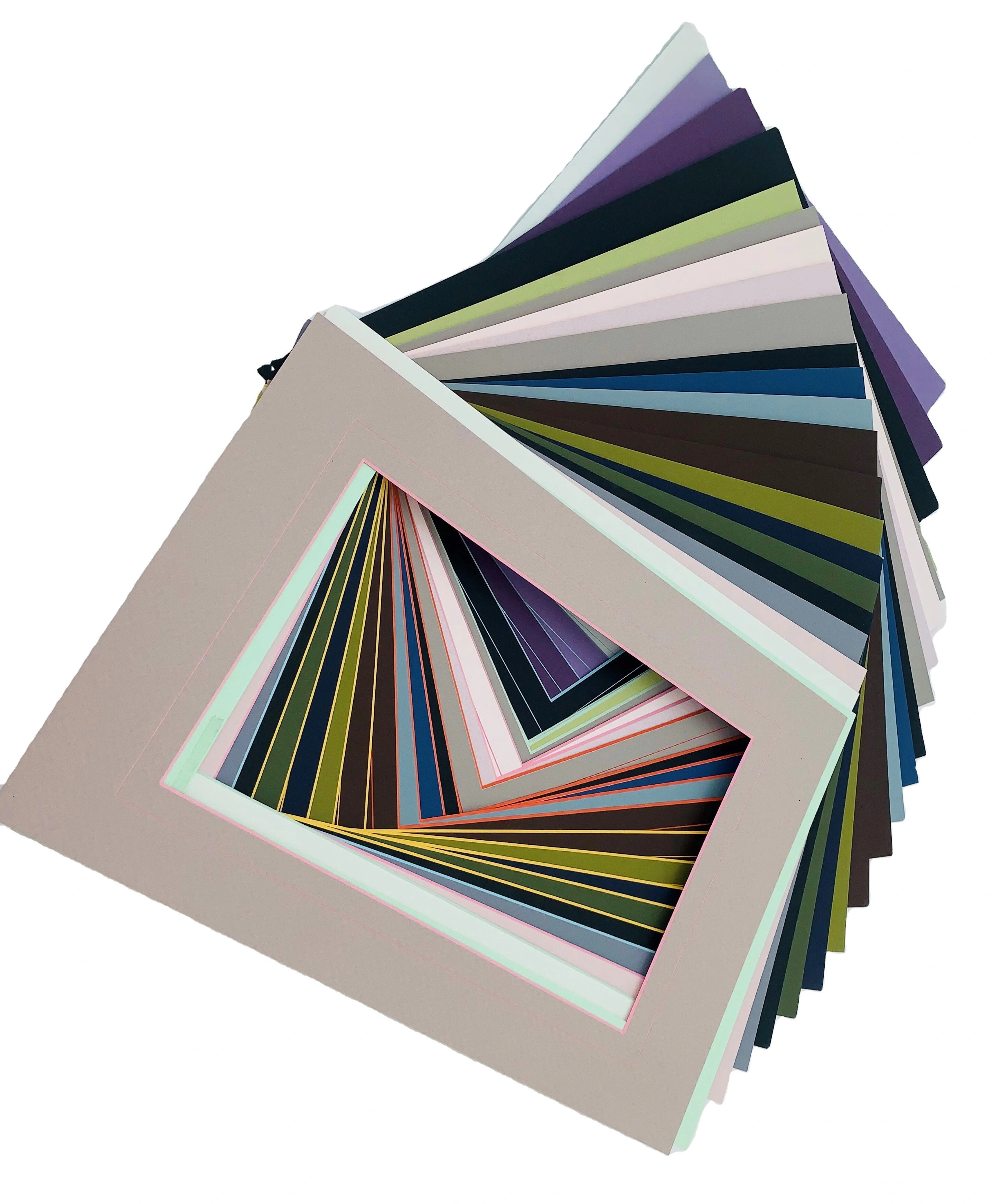Разбиране на безкиселинната плоча
Киселинно-свободната дъска се отнася до специален вид материал, създаден да издържи на щетите, които киселината причинява на обикновената хартия. Обикновената хартия има тенденция да става крехка и да жълтее с течение на времето поради разпадането на нещо, наречено Hoигнин. Киселинно-свободните дъски, от друга страна, остават предимно непроменени в продължение на години, те не се пукат или избледняват лесно. Поради това качество тези дъски се справят много добре с нещата, които трябва да издръжат дълго време. Музеите често ги използват при съхраняването на ценни произведения на изкуството, библиотеките пазят важни исторически документи върху тях, а хората, които искат да запазят семейните си снимки за поколения, също използват киселинно-свободни опции. Факторът на стабилност просто има смисъл за всичко, което си струва да се запази за десетилетия.
Когато се изследват материали, независими от киселина, наистина важна е тяхната стойност на pH. Повечето експерти са съгласни, че качествените материали трябва да имат pH между 7 и 9 по скалата. Материалите с такъв неутрален или леко основен pH няма да влошат състоянието на всичко, което докосват. Платките сами по себе си не отделят киселини, които с течение на времето биха могли да повредят други предмети. И това прави голяма разлика, защото сме виждали много случаи, когато обикновени материали всъщност разрушават ценни предмети просто защото са били съхранявани заедно години наред. Киселинните вещества разяждат деликатни повърхности, причинявайки необратими щети, с които никой не иска да се занимава по-късно.
Използването на дъски без киселина е важно по екологични причини, които далеч надхвърлят възможността просто да се запазят нещата по-дълго. Повечето от тези дъски всъщност се изработват от дървета, отглеждани в контролирани гори, а производството им се извършва без онези агресивни химикали, които се съдържат в обикновените хартиени продукти. Процесът на производство е също много по-чист, което обяснява защо музеите и архивите ги предпочитат в толкова голяма степен. Когато някой избере материали без киселина, той едновременно с това помага за защитата на ценни исторически документи и прави нещо добро за околната среда. Помислете за стари семейни писма или за снимки отпреди век, съхранявани в кутии, произведени от обикновена хартия, които в крайна сметка пожълтяват и се разпадат. Точно това съхранение без киселина предотвратява, което го прави задължителен избор за всеки, който държи на запазването на историята и същевременно е отговорен към околната среда.
Какво прави безкиселиновата плоча идеална за запазване?
Химичният състав на безкиселинните дъски спира киселината да се движи, което е една от основните причини, поради които обикновената хартия се разпада с течение на времето. Обикновената хартия обикновено става крехка и жълта след години на стоянка на рафтовете, защото съдържа киселинни компоненти. Безкиселинните алтернативи всъщност противодействат на този процес, така че създават много по-добре среда за съхранение на неща, които се нуждаят от защита. Проучвания в областта на запазването показват, че когато музеи или библиотеки преминат към използване на безкиселинни дъски за съхраняване на важни документи и произведения на изкуството, тези артефакти издръжат значително по-дълго, отколкото в противен случай. Затова повечето сериозни архивисти настояват за използването им за всичко, което си струва да бъде запазено на дълго време.
Най-големият признак за това колко добре работят материалите, незасягащи от киселина, идва предимно от изследвания в областта на опазването на артефакти, които показват, че те предпазват предметите значително по-добре в сравнение с обикновени материали. Вземете например Библиотеката на Конгреса – те всъщност препоръчват използването на дъски, незасягащи от киселина, когато се запазват исторически артефакти, защото тези дъски просто не се разпадат с течение на времето, както другите опции. Повечето киселинно-незасягащи продукти започват с целулозен пулп, от който е премахнат цялата лигнина, което ги прави по-издръжливи и устойчиви на вреди. Затова толкова много музеи и архиви са преминали към използването на такива материали при съхранението на важни документи и колекции.
Ако разгледаме числата, ще видим, че дъските без киселина се запазват значително по-дълго от обикновената хартия в архиви. Стандартната офис хартия обикновено се разпада след около 30 или 40 години, но материали без киселина остават здрави в продължение на стотици години, ако се съхраняват при добри условия. Разликата е много важна за запазването на важни неща като картини, стари писма и семейни снимки през поколенията. Затова музеите и сериозните колекционери настояват за използване на плочи от киселинно-безопасен пенопласт и подобни продукти, когато искат да предпазят предметите от износване. Това не е само въпрос на добър визуален вид днес, а и за това тези неща да оцелеят и за нашите деца и внуци.
Предимства при използването на безкиселинна плоча за fotografii и документи
Доските за съхранение без киселина дават на снимките и важните документи значително по-голям шанс да се запазят по-дълго без повреди. Тези доски не се разпадат толкова лесно, защото са устойчиви на влага и вредни химикали във въздуха, така че снимките остават в добро състояние години наред, вместо да избледнеят. За всеки, който иска спомените на семейството или бизнес записите да издържат на изпитанието на времето, това наистина е важно. Документи, съхранявани в папки без киселина, обикновено ще просъществуват много по-дълго в сравнение с обикновени решения за съхранение на хартия. Някои хора са намирали стари писма от баби и деда, които все още били четливи след 50 години благодарение на правилното съхранение.
Не само че запазват предметите, но и безкиселинните дъски всъщност помагат за опазване на околната среда, тъй като намаляват употребата на вредни химикали. Добрата новина е, че тези дъски не позволяват на опасни химикали да се процеждат с течение на времето, което означава по-малко притеснения относно токсичността за всички участници. Архивистите, които работят с исторически документи всеки ден, често споменават колко по-добре се представят безкиселинните материали в сравнение с обикновените. Повечето служители в музеи или библиотеки ще кажат на всеки, който попита, че продуктите без киселина предотвратяват онези досадни жълти петна и не позволяват на хартията да стане крехка след години на съхранение. Това е важно, защото помага семейни снимки, стари писма и други ценни предмети да изглеждат добре дълго след като нас вече го няма.
Сравнение с други материали за съхраняване
При сравнението на киселинно-неутрална хартия с обикновена хартия се наблюдават някои основни разлики, свързани предимно със съдържанието на киселини. Обикновената хартия често съдържа значително количество киселина, което всъщност ускорява процеса на разрушаване на документи и снимки. През годините това води до неприятните жълти петна и хрупкавите страници, които всички мразим да виждаме. Киселинно-неутралната хартия обаче не съдържа тези вредни киселини. Тя осигурява далеч по-добри условия за запазване на материали в добро състояние. Артефактите, съхранявани в киселинно-неутрална среда, издръжат много по-дълго без деградация, което я прави идеална за важни документи или ценни колекции, които изискват надлежно поддържане през десетилетия.
Хората често използват пластмасови калъфи и торбички, когато съхраняват важни документи или семейни снимки, но има един недостатък. Тези пластмаси с течение на времето освобождават химикали, които всъщност разрушават това, което е съхранено в тях. Още един проблем? Пластмасата просто не осигурява добро циркулиране на въздуха. Влагата се задържа между страниците или зад снимките, създавайки идеални условия за растеж на плесен и мухъл. Затова много архивисти препоръчват използването на киселинно-независими алтернативи. Тези материали осигуряват подходящо вентилиране, така че предметите да останат съхрани, но в същото време защитават чувствителните документи от прах, светлинен изpon, и други опасности, които съпътстват дългосрочното съхранение.
В практиката, използването на дъски без киселина прави реална разлика за това колко добре се запазват предметите с течение на времето. Музеите и архивните центрове често избират опции за монтиране без киселина и плочи от пенополистирол вместо обикновени материали, когато експонират или съхраняват важни колекции. Хартиените документи и снимките, поставени върху тези специални дъски, се запазват значително по-добре в сравнение с тези, които се съхраняват върху стандартни материали, които с течение на годините жълтеят и се разрушават. Някои проучвания показват, че произведения на изкуството и исторически документи, съхранявани правилно с материали без киселина, остават непокътнати десетилетия по-дълго без видими увреждания. За всеки, който се занимава с ценни или незаменими предмети, допълнителните разходи за качествени решения за съхранение се отразяват изключително добре на дългия термин.
Лучши практики при използването на безкиселинова дъска
Максималното използване на киселинно-свободните дъски започва с начина, по който се отнасяме към тях всеки ден, за да се предотврати нежелана повреда. Добра практика е да си сложите ръкавици, преди да докоснете повърхността на дъската, тъй като маслините от кожата и мръсотията могат да оставят постоянни следи. Работата на равна маса или плот също прави голяма разлика за това дъските да изглеждат добре години наред. Тези основни стъпки допринасят много за предотвратяване на нежелани инциденти при преместването или съхранението им. Когато става въпрос за съхранение на киселинно-свободни дъски за по-дълъг период, има няколко важни неща, които трябва да се имат предвид. Помещението трябва да бъде със сух, но не прекомерно, температурните колебания трябва да са минимални, а излагането на директни слънчеви лъчи трябва да се избягва по всяка цена. Дъските, оставени във влажни или горещи условия, често се деформират сериозно, докато ултравиолетовата светлина с течение на времето може да разгради материала. Тези фактори на околната среда са важни, защото никой не иска ценни документи или артефакти да бъдат съсипани от неподходящи условия за съхранение.
Запазването на киселинно-свободни материали в безопасно състояние изисква внимание към начина, по който ги съхраняваме. Добра отправна точка е създаването на прост списък с указания за подходящи условия за съхранение. Основните принципи? Използване на киселинно-свободна хартия между страниците, изработени по поръчка матови дъски, които плътно прилягат, без да създават точки на налягане, и дишаващи покрития за съхранение, вместо пластмасови контейнери. Всички тези компоненти трябва да отговарят на архивни стандарти, защото дори и малки количества киселина с течение на времето могат да повредят деликатни документи. Много хора грешат, че използват първото попаднало под ръка нещо от магазин за ръчна изработка, но често тези материали съдържат вредни химикали. Друг проблем възниква, когато предметите се поставят твърде плътно един до друг – нещо, което консерваторите в музеите виждат често по време на реставрационни работи. Те са срещали случаи, когато неправилното разстояние между предметите е довело до трајно деформиране и пожълтяване. За всеки, който наистина се интересува от дългосрочното запазване на колекцията си, следването на професионални препоръки прави голяма разлика при поддържането както на физическото състояние, така и на историческата стойност на киселинно-свободните дъски.
Заключение
Киселинно-независимите дъски са от голямо значение, когато става въпрос да се запазят документи, снимки и произведения на изкуството непроменени за години напред. Това, което ги прави толкова важни, е начина, по който спират предметите да се разпадат вследствие на киселинното преминаване през хартията. Тази защита помага на нещата да траят значително по-дълго, отколкото биха могли с обикновени материали. Изборът на киселинно-независими опции всъщност предпазва онези ценни колекции от вреди, причинени от околната среда. Всеки, който се интересува да научи повече за правилните методи за съхранение, може да пожелае да потърси информация относно различните начини, по които хората запазват архивите си.
Често задавани въпроси
Какво е безкиселинна дъска?
Безкиселинната дъска е материал, проектиран да се съпротивлява на разрушаването от киселина, което я прави идеална за продължително запазване.
Защо нивото на pH е важно за безкиселинните дъски?
Нивото на pH, идеално между 7 и 9, гарантира, че дъската не допринася за киселинизацията на запазените предмети.
Как приносим безкиселинните дъски за екологичната устойчивост?
Тези плочи често идват от устойчиви източници и намаляват употребата на токсични химикали при производството си.
Колко дълго могат безкиселинни плочи да запазват предмети?
При правилно съхраняване, безкиселинните плочи могат да поддържат предметите непокетени през векове, значително по-дълго от обикновената хартия.
Защо трябва да се използват безкиселинни материали вместо пластмаси за съхранение?
В противоположност на пластмасите, безкиселинните материали позволяват на предметите да „дишат“ и не водят до токсична екстракция.

